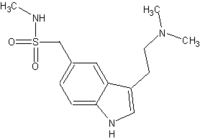Imagine head pain so incapacitating that you must retreat to a dark, quiet room where you lie in agony waiting for it to subside. Diana Burlew, of Fairfield Township, Ohio, knows all about it. For the past 20 years, she has suffered from excruciating pain that hits her like clockwork the week of her menstrual period. "You almost feel that if you were to slam your head against the wall it would somehow feel better," says Diana. That's what migraine headaches will do to you.
A complex disorder, migraines are more common than asthma, diabetes, or congestive heart failure. They inflict severe and often debilitating pain on about 26 million Americans, 75 percent of them women who, like Diana, are twice as likely to experience migraine during the first two days of their menstrual cycle than the rest of the month. Yet despite major advancements in treatment, a recent National Headache Foundation study estimates that less than half of migraine sufferers seek any kind of medical relief.
Even if they did ask for help, it's possible sufferers might not get the treatment and support they need. Migraines are often still unjustifiably linked to psychological problems, particularly among women, says Richard B. Lipton, MD, professor of neurology at Albert Einstein College of Medicine of Yeshiva University in the Bronx, New York. In short, women are more likely to have their pain dismissed as being more imagined than real, he says.
FEELING YOUR PAIN
But migraines are all too real. According to recent estimates, migraines cost American businesses some $13 billion in lost work or reduced productivity each year. Most sufferers miss an average of two days of work a month as a result of migraine-related problems.
Research has identified a specific set of symptoms and warning signs: Typically lasting anywhere from an hour to several days, the pain from a migraine is usually throbbing and, unlike a regular headache, often unbearable.
"If the headache is bad enough to disable you, the odds are it's a migraine," says Stephen D. Silberstein, MD, director of the Jefferson Headache Center at Thomas Jefferson University Hospital in Philadelphia. Specific signs of migraine pain include:
* Pain on only one side of the head.
* Accompanying nausea and vomiting.
* Sensitivity to motion, light, sound, and odors.
* Post-migraine "hangover"--sufferers are often left feeling depleted of energy after the pain subsides.
Some sufferers have a warning, known as an aura, before the painful part of the attack begins. Typically lasting 5 to 30 minutes, an aura can come in the form of a flickering or zigzag light in the field of vision.
AVOIDING THE AGONY
There are some effective medications--ranging from over-the-counter migraine pain relievers to prescription class drugs like triptans (Imitrex, Zomig, Amerge), which work to abort acute migraine headaches by narrowing blood vessels and reducing blood flow in the brain.
But excessive use of both over-the-counter treatments and prescription medicines can actually lead to drug dependency, and even cause chronic headaches that persist despite the use of medication. So in addition to drugs, most migraine experts recommend making lifestyle changes to help prevent migraines and minimize pain when migraines strike. Here are some tips.
Keep track of possible causes. Classic migraine triggers include all of the following:
* Aged cheeses, red wines, certain nuts, and an overall high-fat diet are common migraine inducers. "Keep a food diary every day and log in every time you get a migraine," says Cindy Moore, registered dietitian and spokesperson for the American Dietetic Association. Doing this will help you draw a link between migraine episodes and problem foods.
* Suddenly changing your caffeine intake, either increasing or decreasing. If you're trying to cut back on coffee or caffeinated beverages, do it gradually.
* Skipping meals or fasting.
* Changes in the environment: weather or time zones; inadequate, fluorescent, glaring, or flickering lights (including your computer screen); strong odors; loud noises; or high altitudes.
* Tobacco, including secondhand smoke.
* Not drinking enough water, especially if you do drink a lot of caffeinated beverages, which are dehydrating.
* Too much or too little sleep. Maintain a regular sleep schedule.
Take time for you. Stress is a well-known migraine trigger. Make time for exercise, even if it's a quiet, brisk 20-minute walk every day. Explore other stress-reducing options, such as yoga, biofeedback, and therapies that promote relaxation. They can reduce frequency and severity of migraines.
KIDS GET MIGRAINES TOO
Megan Burlew, 13, of Fairfield Township, Ohio, shares her mom Diana's struggle with migraine pain. Megan's headaches often leave her slumped over her desk or scrunched down in her bus seat in agony. "They feel like someone is hitting me on the head," she says.
About 8 to 10 percent of American children suffer from migraines. If you have migraines, your child has a 50 percent chance of having them too. If both you and your spouse have them, that risk increases to 75 percent.
So far, the U.S. Food and Drug Administration has not approved the use of migraine medications for children under the age of 18. But children, like adults, can decrease the risk of headaches by drinking more water, cutting back on caffeine, getting enough sleep, eating right, and not skipping meals.
Kids get headaches just like everyone else. But if your child seems to be having headaches with any kind of frequency, talk to a pediatrician about it--even if there is no family history of migraines, stresses Scott W. Powers, Ph.D., a migraine researcher at Cincinnati Children's Hospital Medical Center. And don't think your child might be too young to have migraines. Powers has treated children as young as 3 years.
COPYRIGHT 2003 Meredith Corporation



